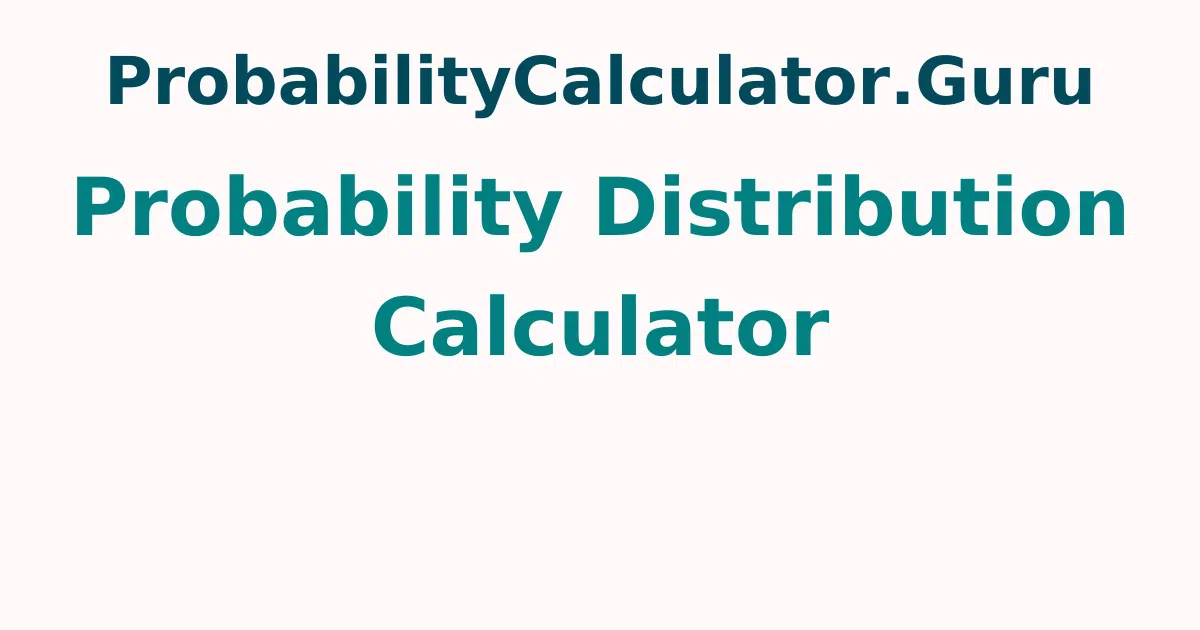Probability Distribution Calculator
Created By : Vaibhavi Kumari
Reviewed By : Rajashekhar Valipishetty
Last Updated : Apr 02, 2023
Make use of the Probability Distribution Calculator to find the mean, variance, standard deviation of the given data easily. Simply enter random variable value and probability and hit the calculate button to avail the mean, variance and standard deviation for the distribution in the blink of an eye with a detailed explanation. You can also find out through probability distribution table calculator, standard deviation of the probability distribution calculator, probability calculator with steps, probability calculator with mean and standard deviation, standard deviation of probability distribution calculator, mean of probability distribution calculator, and probability distribution mean calculator.
What is the Probability Distribution ?
The probability distribution is defined as the possible outcomes for any random event. It is based on the underlying sample space as a set of possible outcomes for any random experiment. And the probability is the measure of uncertainty of phenomena. The random experiment is the result of an experiment, where the outcome can't be predicted.
The two types of probability distribution are listed here.
- Normal or Cumulative Probability Distribution
- Binomial or Discrete Probability Distribution
Mean, Standard Deviation, variance of Distribution Formulas
The formulas to find the mean, variance and standard deviation for a distribution are along the lines:
- Mean μ = ∑x · p(x)
- Variance σ² = ∑x² · p(x) - μ²
- Standard Deviation σ = √[∑x² · p(x) - μ²]
Where,
x is the random variable number
p(x) is the probability of the experiment.
Steps to Solve Parameters Of Probability Distribution
Following are the simple steps to calculate the probability distribution mean, variance, and standard deviation.
- Get the number and its probability.
- Make the values in the form of a table to read the data easily.
- Multiply the each value with its probability.
- The sum of resultant products is the mean.
- The sum of each value squared times the probability of the value occurring, minus the mean squared is variance.
- The square root of the variance is the standard deviation. You can also use find the mean, variance and standard deviation of the probability distribution calculator.
Example:
Find the mean, standard deviation and variance of the probability distribution?
| x | p(x) |
|---|---|
| 1 | 0.2 |
| 2 | 0.1 |
| 3 | 0.3 |
| 4 | 0.05 |
| 5 | 0.3 |
| 6 | 0.05 |
Solution:
The formula to calculate mean is μ = ∑x · p(x)
= 1(0.2) + 2(0.1) + 3(0.3) + 4(0.05) + 5(0.3) + 6(0.05)
= 0.2 + 0.2 + 0.9 + 0.2 + 1.5 + 0.3
= 3.3
The formul ato find variance of probability distribution is σ² = ∑x² · p(x) - μ²
∑x² · p(x) = (1² . 0.2) + (2² . 0.1) + (3² . 0.3) + (4² . 0.05) + (5² . 0.3) + (6² . 0.0.5)
= 0.2 + 0.4 + 2.7 + 0.8 + 7.5 + 1.8
= 13.4
σ² = 13.4 - 3.3²
= 2.51
Standard deviation σ = √2.51
= 1.584
Check Probabilitycalculatorguru to find the parameters of probability distribution of any data easily & quickly.
FAQ’s on Probability Distribution Calculator
1. What does mean by probability?
Probability is defined as the occurrence of an event. It is the ratio of the number of favorable outcomes to the total number of outcomes in an event.
2. How do you calculate probability distribution?
Give each value and its probability in the mentioned input boxes of the calculator and press the calculate button to find the probability distribution mean, standard deviation and variance easily.
3. What are the rules for probability distributions?
The two conditions of the probability for a discrete random variable is function f(x) must be nonnegative for each value of the random variable and second is the sum of probabilities for each value of the random variable must be equal to 1.
4. What are the steps in constructing a probability distribution?
- At first, write the number of widgets in one line.
- Beside each value, write its probability.
- Make a note that, the sum of probabilities should be equal to 1.
